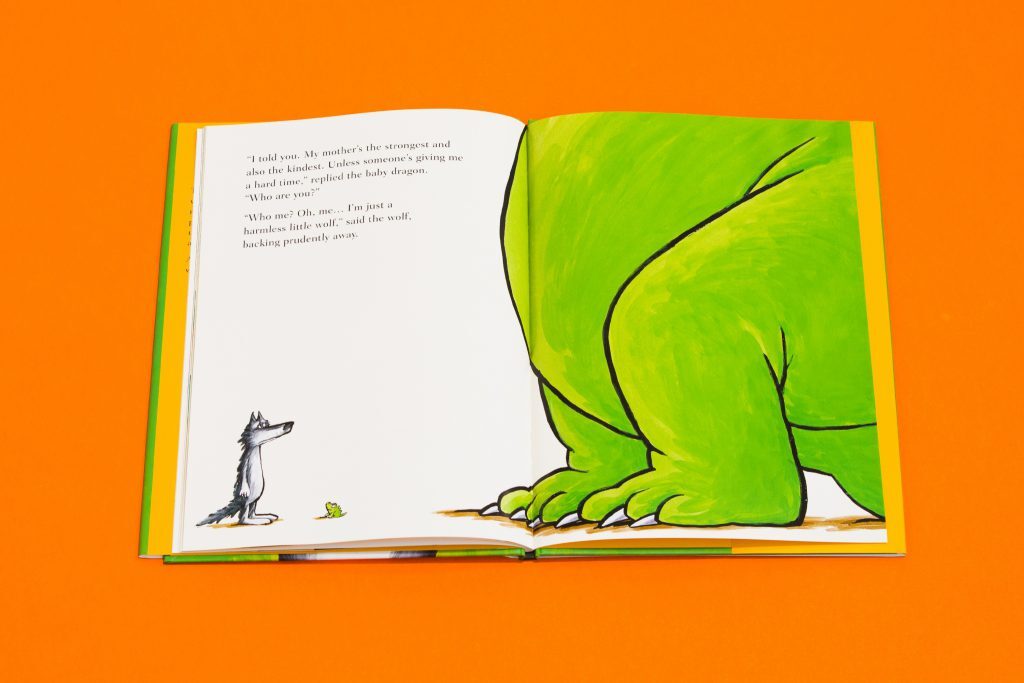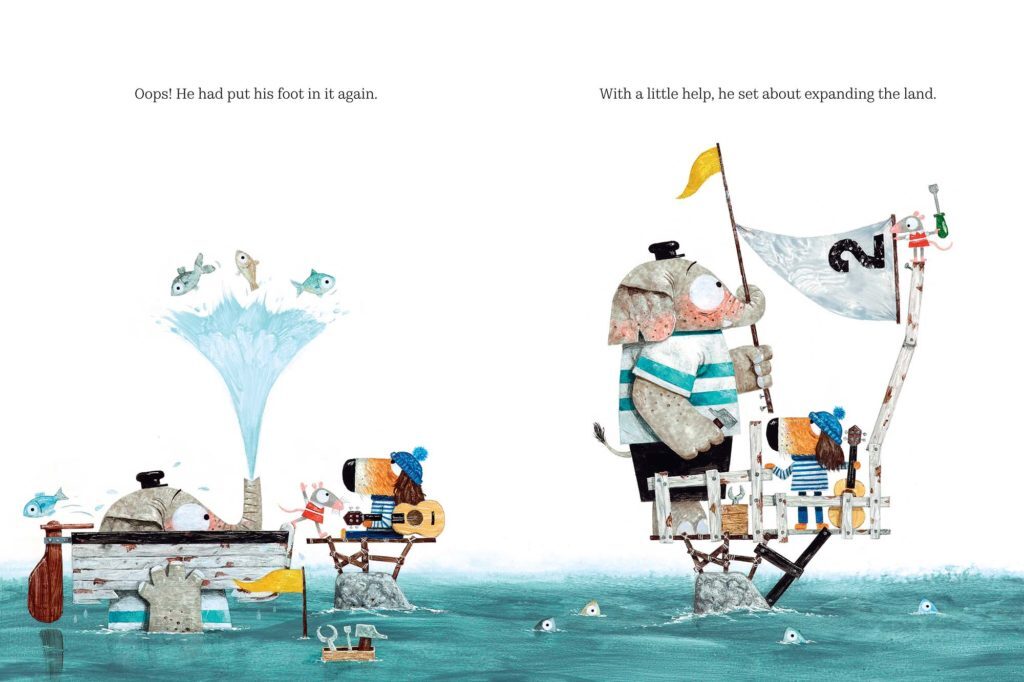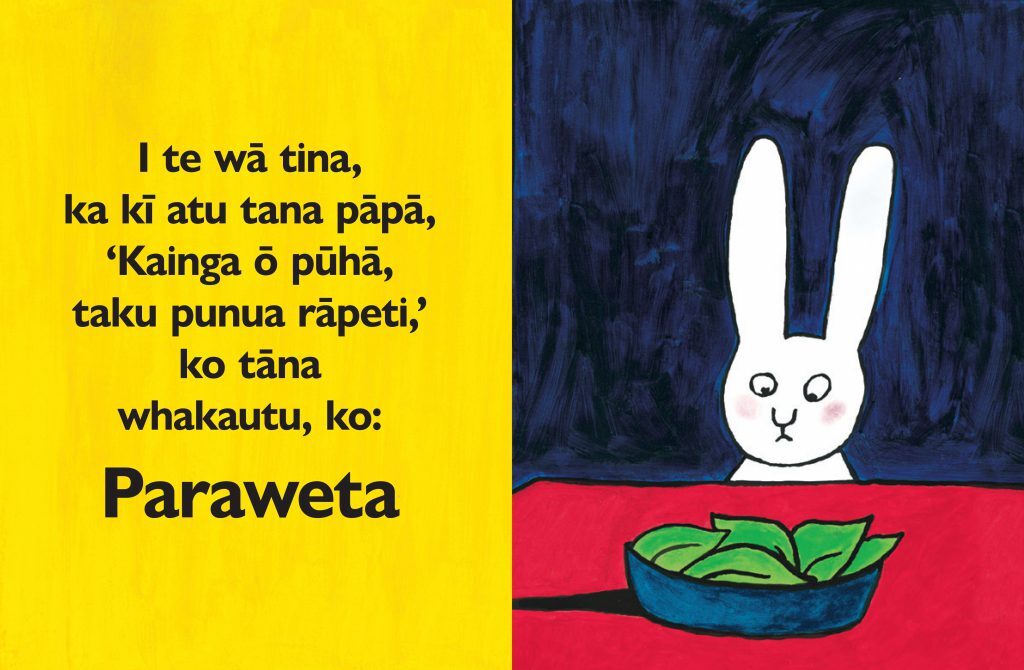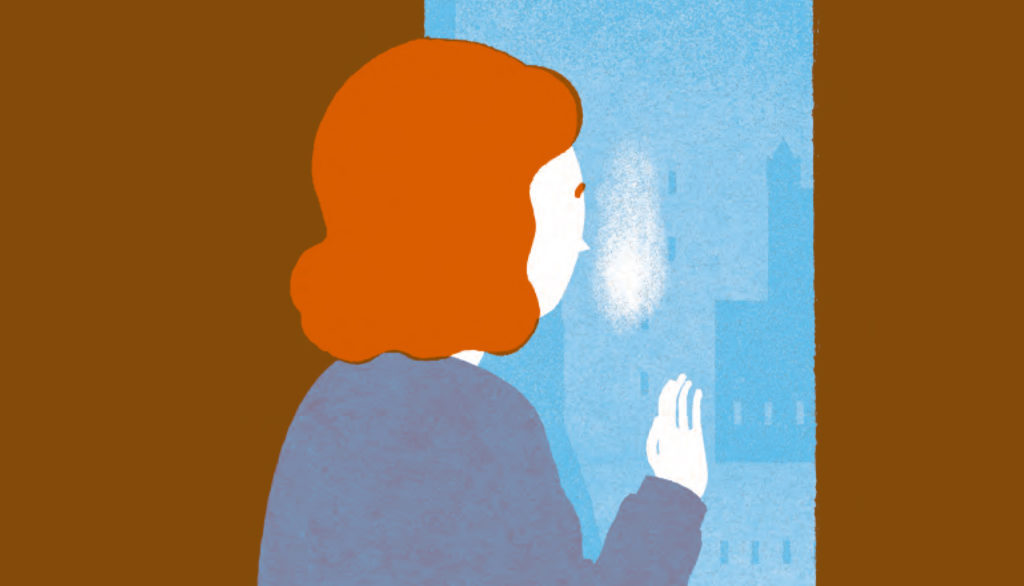By Julia Marshall, Publisher
A good translation is all in the detail; the result often reflects the amount of effort put in to giving every word its due and making the multitudes of small decisions that can make or break the book. A good translation will not be rushed.
Successfully translating a children’s book
For a translation to succeed, it needs to capture the tone and the spirit of the original, and also the rhythms. The right word must be in the right place—literally, in the case of the picture book, where the position of the words on the page is important—and unnecessary words removed. If the story sings along in the original language, the translation must, too. Timing is everything. There will be some words that hum along, and some whose job is to stop you in your tracks, as in “said the wolf, backing prudently away” (in I Am So Strong by the late Mario Ramos), or, from Poo Bum, “Mother, the flavour is exquisite!”
 Translating picture books is similar to translating poetry, as I understand it. It does not do to remain slavishly close to the original, but the whole must remain true to the spirit of the original. Word for word will not work. And yet, there may be something of the flavour of the original language in the sentence structure or the choice of words (“after a fine and filling meal, the wolf…” retains just a scent of French, perhaps).The picture book translator must work with confidence, and we find that the translator must also be a good children’s writer. Some translators are more right for one book than for another. Poets and journalists can make good picture book translators, as there is much to gain in being able to say a lot in a few words.
Translating picture books is similar to translating poetry, as I understand it. It does not do to remain slavishly close to the original, but the whole must remain true to the spirit of the original. Word for word will not work. And yet, there may be something of the flavour of the original language in the sentence structure or the choice of words (“after a fine and filling meal, the wolf…” retains just a scent of French, perhaps).The picture book translator must work with confidence, and we find that the translator must also be a good children’s writer. Some translators are more right for one book than for another. Poets and journalists can make good picture book translators, as there is much to gain in being able to say a lot in a few words.
Translating humour
Some writers are easier to translate than others. As a translator, I find humour easier when it is to do with what is being said rather than word play and wit. But if there are puns in the original, there must be puns in the translation. They may of necessity be different to those in the original, and it takes a brave and gifted translator to achieve that—or a brave and gifted editor.
One of those is Daniel Hahn, who translated My Pictures After the Storm by Éric Veillé. This “before-and-after” picture book for preschoolers is very funny and full of puns. The humour is in the sound and rhythm of the words across the page—and up and down—as well as in the content and how it relates to the pictures.
 Before Daniel began translating, he wrote an excellent article for Asymptote that talks about translating word play. “It’s going to be exceptionally hard to make this book work in English—in proportion to the tiny number of words in the book, almost certainly the biggest challenge I’ve faced—and I just can’t wait to get started.”
Before Daniel began translating, he wrote an excellent article for Asymptote that talks about translating word play. “It’s going to be exceptionally hard to make this book work in English—in proportion to the tiny number of words in the book, almost certainly the biggest challenge I’ve faced—and I just can’t wait to get started.”
He made a wonderful translation and you can visit the book here to see what he achieved.
Translating rhyme
If a book has been written in rhyme, Rachel now often works with James Brown in Wellington and there is a lot of back and forth to get a refrain right, to retain the story front and centre, and for the rhythms to be exactly right, as in his text for Where Is the Dragon? by Leo Timmers.
Leo writes of this process: “I’m always very curious to see what translators will do with my work. Translating rhyming texts is pretty hard, especially when the text is so short and condensed. Of all the translations, James’ versions deviate the most from the existing text, but in a good way. They always surprise me, and I always love it. He manages to capture the spirit of the text, while at the same time bringing his own imagination and poetry to it.”

But in Elephant Island, also by Leo Timmers, a book coming next year, the text that rhymed in the original felt forced in the English so James played it straight. (We also gave the elephant a name, Arnold, and we found that we grew more and more fond of him once he was called that.)
American vs. British English
All Gecko Press books are edited twice: once for voice, tone and consistency and then again, with a different editor, for Americanness (or for Britishness, if we have worked with a US translator), as it is important not to lose readers on either side of the Atlantic. Because Gecko Press publishes in all these markets, our translations must ideally be in international English that reaches the hearts of readers in all those countries, and this adds another dimension to the work of the translator and editor.
In working with the US, we have learned at Gecko Press that compromise is not always a bad thing. Again, in I Am So Strong, the French “artichaut misérable”, was translated to “miserable gherkin” for the British English edition published by Gecko Press. Because Americans don’t understand gherkins, this was changed to “miserable gizzard” for the American market—a translation that kept the right sound and spirit, rather than the alternative of “pickle”. “Miserable pickle” somehow has less drama than “miserable gizzard”, we felt, and I love miserable gizzard better than original miserable gherkin. Although last time we discussed this in the office, many years after publishing the book, we all thought “artichoke” could have been fine too. Translation is an art and a choice.

Translation into te reo Māori
About eight years ago Paora Tibble asked us to translate Who’s Hiding? into te reo Māori, and we asked him back—to translate it. Ko Wai e Huna ana? became the beginning of a collection of our best-loved books translated into te reo Māori each year. We do this with great care as Māori is not our language, and we trust our translator, editor and proofreaders. We have discussions about what words mean, and the feel and tone, as in the example of Paraweta, Karena Kelly’s translation of Poo Bum, for which we discussed many options. Karena said: “The biggest challenge was finding the best fit for ‘Poo Bum’ itself. Its translation needed to be fun to say, cheeky enough to be a little bit naughty but not so harsh as to be a curse-word, but also able to be used as a term of endearment! Pai kare! After doing my research (and finding many more words for ‘poo’ and ‘bum’ than I ever thought existed), two great men with the memories of mountains shared their recollections of the word ‘paraweta’ in the playground when they were small, bandied about between kids, and used as a cheeky pet name by mums and nannies towards their little ratbags. Tā Timoti, Te Huarahi, mei kore ake kōrua.”

Translating culture
Translation of picture books is not always only about the words. Sometimes there may be a problem in an illustration, particularly in the US where images of body parts and body functions are scarcely tolerated. It is difficult to know how deeply some conventions, cultural norms and barriers are seated when they are not your own. Part of the process of choosing a book that will work well in translation is to look at the book through the eyes of many different people—not just our own eyes. Sometimes we may think it is possible to break or extend or play on those norms. We ask ourselves whether breaking a boundary is the exactly right thing to do—or a disastrous choice.
Every American editor, for example, who was shown what became The Noisy Book – one of the most popular Gecko Press titles for babies—turned it down because it is 120 pages, which is a lot for a toddlers’ book. But because we knew that our toddlers in the UK, Australia and New Zealand, to say nothing of those in France and Germany, were fine with this many pages, we decided to proceed rather than split the book into three, and the book now does very well for American families too. We did change the page where it says “Spinach goes yuck” to “Spinach goes yuck/yum” so that parents can either say both or choose which option they like; many people don’t like to think that spinach is yuck. (The German publisher of this book pointed out that the spinach is in a can, so it probably is yuck). We also changed the hands slapping to hands clapping, for obvious reasons.
At Gecko Press our rule is that if the image or word is critical to the enjoyment of the book, we stick with the original. If we think an image or word is going to damage the book in the English market and is peripheral, we will ask for a change. It is always a matter of great debate.
Found in translation
Many people talk about the notion of things being “lost” in translation—and of course we would be better if we could read Chinese, French, Polish and so on, and enjoy stories as they were written. We are nevertheless much the richer for the translated books from other countries to bring us something of the wider world and the flavour of it and the different ways of thinking and doing. But it is true that a bad translation can kill a book, faster than you can say blink, or oogwenk. A bad translation is like looking through a dirty window: with a good translation, you don’t know the window is there.


